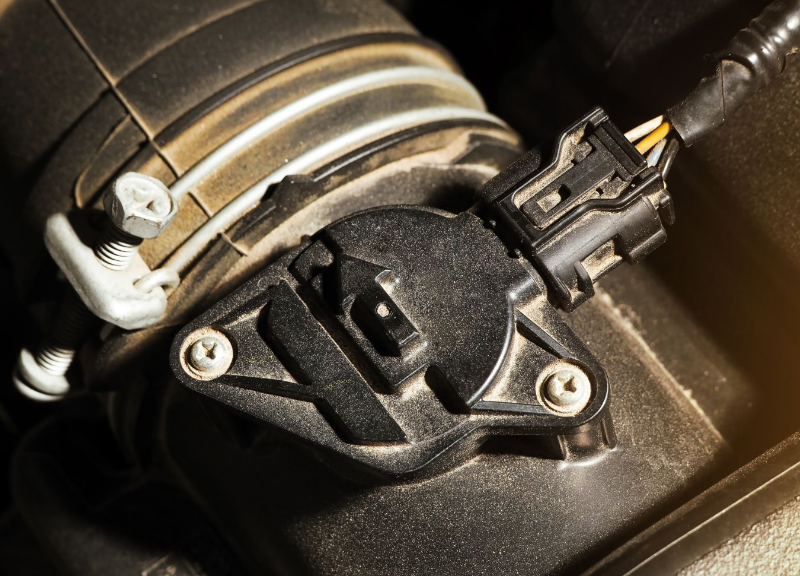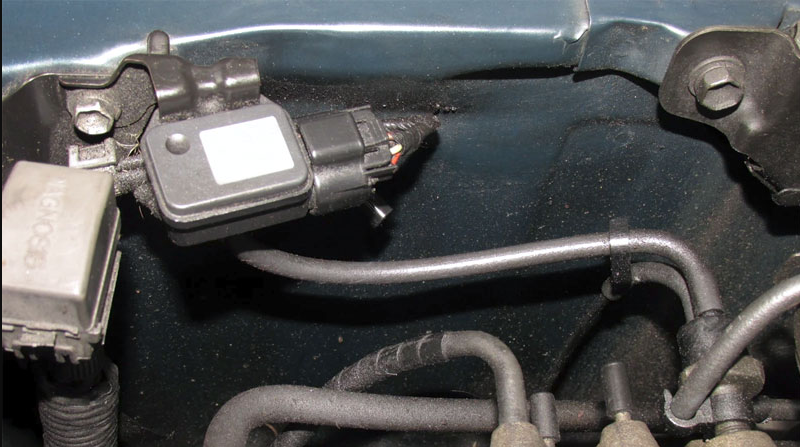Tech: The Whats and Hows of MAP Sensors
A Critical Component for Engine Efficiency
This article may contain affiliate links.
Automotive sensors play a vital role in the everyday functioning of your car. They monitor crucial vehicle and engine parameters such as fueling, brake force and even the air quality reaching the cabin through the AC. This data is relayed in real-time to the car’s engine control unit (ECU) and it makes any needed adjustments. The aim is to provide optimal performance and safety each time you turn the ignition on.
The number and type of sensors in modern cars are increasing by the day. And they’re more prevalent in high-end models, where they not only help with performance, but also inform of possible faults in different vehicle parts and systems, thus also having a hand in longevity. One sensor that aids with engine efficiency is the MAP or manifold absolute pressure sensor. In aspirated engines, this is usually found on the intake manifold and next to the throttle body.
In turbos, the MAP sensor is on the intake tract, just before the turbine. The main purpose of MAP sensors is to calculate the air pressure reaching the engine needed for combustion. This provides the ECU with the necessary data for optimal air and fuel ratios under different engine loads and determines ignition timing. In short, MAP sensors play an important role in how your car performs.

Why Do Cars Have MAP Sensors?
The role of a MAP sensor is to measure manifold absolute pressure or, more precisely, the pressure inside the intake manifold. With the engine off, this is the same as the atmospheric pressure. At sea level and at a temperature of 15 degrees Celsius, this is 1 Bar (or roughly 14.7 pounds per square inch [PSI)]. With the engine idling, this drops to two-thirds, or 0.67 Bar (9.7 PSI), due to the vacuum created by moving internals. The measurement allows the ECU to calculate the air density and follow up with precise fueling.
Air density will change during the journey, and depends on engine loads, the fueling mixture, as well as altitudes, and outside air temperature. A car MAP sensor then provides the ECU with the relevant information for optimal throttle response, changing the fuel delivery as needed, and precise ignition timing from the spark plugs. This is directly related to performance and helps to get more out of your car.
How Do They Work?
MAP sensors work much like any other sensor on the car. They consist of sensing elements and an electrical circuit. The sensing element is responsible for taking air pressure measurements inside the intake manifold, converting this to an electrical signal, which is then interpreted by the circuitry and passed onto the ECU through the connecting pins and wiring. When starting the engine, air pressure and density in the intake drop, creating a vacuum.
Applying the accelerator pedal to open the throttle body causes the pressure to rise, thereby creating less vacuum. This difference in pressure is detected by the sensing element and informs the ECU how much fuel is needed. The ECU can then vary the fueling and ignition timing accordingly. The readings from MAP sensors are combined with data from other sensors, such as those that monitor air intake temperature, mass airflow and engine speed. When the sensor does fail or is defective, the car and engine will experience changes for the worse.

Signs of a Faulty MAP Sensor
Any sensor in your car can fail and the MAP sensor is no different. This can be caused by a range of reasons, from contamination, clogging, leaks, excessive vibrations or parts literally melting from high engine heat. Both the sensing elements and circuitry can fail and trigger a check engine warning in the dash. There may also be visible damage to wiring, connectors and hoses.
Here are the typical signs that the sensor is failing.
- Rough idling – This is mainly down to abrupt changes in the air and fuel mixture, periodically changing between rich and lean mixtures, and accompanied by noticeable vibrations. You might also notice misfires. Lean mixtures in particular cause excess heat and lead to pre-detonation. If this persists, you risk severe damage to the pistons, connecting rods and other engine internals.
- Loss of power and stalling – If the ECU is reading high vacuum, then it assumes the engine loads are low, so it gets the injectors to spray less fuel and slows the ignition rates in the spark plugs. While fuel use is lower, so is performance, meaning a harder time accelerating. Moreover, faulty sensors providing inaccurate data are one of the main reasons for a car stalling.
- High Fuel Use – Steep rises in fuel consumption are down to the MAP sensor indicating very low or negative vacuum readings. The ECU responds with more fuel in the injectors and corresponding ignition timing.
- Rising emissions – Fuel that doesn’t correspond to the engine load will mean higher emission rates. Low fuel amounts see a sharp rise in nitrogen oxide (NOx), while too much fuel is the reason for excessive carbon monoxide. Both are toxic and can cause health and environmental issues. This is important in that you may not pass an emissions test.
- Hard starts – A fault in the mass air flow (MAF) sensor can be the reason for difficulty starting. This is mainly down to a rich or lean mixture. If the car starts only with your foot firmly on the accelerator, then the MAP sensor is the likely cause.
Fortunately, defects in cars with OBD-II ports are easy to diagnose and a simple scan will display the error code. You can also visibly inspect the sensor for damage to the wiring or loose connections and check the condition of the pins. Damage here can also be assessed with a multimeter. In engines where the sensor is connected to a hose, cracks in vacuum hoses and potential debris inside will also cause trouble.
Replacements are easy and cheap to find, costing roughly the same or less than a related MAF sensor. Swapping either out is a straightforward process and takes several minutes.
MAP vs MAF Sensors – Know the Difference
Both sensors are used to determine the amount of air entering the engine. But both do so in slightly different ways. MAF sensors measure mass air flow or volume. They are located before the throttle body in the intake piping, between the air intake and inlet manifold. Most MAF sensors are of the ‘hot wire’ type and also measure the air temperature to calculate how dense it is. Based on these readings, the ECU then adjusts the fuelling and timing.
MAP sensors are an older design, and are found mainly in aspirated engines. They have steadily been replaced by MAF sensors since these provide somewhat more accurate readings. Cars with forced induction and turbos usually have both to ensure maximum engine efficiency and performance.
